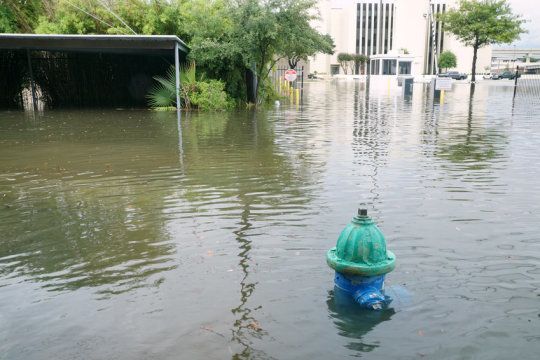[ad_1]
For the first time, researchers have developed a data set quantifying what the social cost of carbon — the measure of the economic harm from carbon dioxide emissions — will be for the globe’s nearly 200 countries, and the results are surprising. Although much previous research has focused on how rich countries benefit from the fossil fuel economy, while damages accrue primarily to the developing world, the top three counties with the most to lose from climate change are the United States, India and Saudi Arabia — three major world powers. The world’s largest CO2 emitter, China, also places in the top five countries with the highest losses.
The findings, which appear in Nature Climate Change, estimate country-level contributions to the social cost of carbon (SCC) using recent climate model projections, empirical climate-driven economic damage estimations and socioeconomic forecasts. In addition to revealing that some counties are expected to suffer more than others from carbon emissions, they also show the global social cost of carbon is significantly higher than the one standardly used by the U.S. government to inform policy decisions.
Among the most-trusted contemporary estimates of SCC are those calculated by the U.S. Environmental Protection Agency (EPA). The latest figures for global costs range from $12 to $62 per metric ton of CO2 emitted by 2020; however, the new data shows SCC to be approximately $180 — 800 per ton of carbon emissions. What’s more, the country-level SCC for the U.S. alone is estimated to be about $50 per ton — higher than the global value used in most regulatory impact analyses. This means that the nearly five billion metric tons of CO2 the U.S. emits each year is costing the U.S. economy about $250 billion.
“We all know carbon dioxide released from burning fossil fuels affects people and ecosystems around the world, today and in the future; however these impacts are not included in market prices, creating an environmental externality whereby consumers of fossil fuel energy do not pay for and are unaware of the true costs of their consumption,” said lead author, University of California San Diego assistant professor Kate Ricke, who holds joint appointments with the campus’s School of Global Policy and Strategy and Scripps Institution of Oceanography.
Ricke added, “evaluating the economic cost associated with climate is valuable on a number of fronts, as these estimates are used to inform U.S. environmental regulation and rulemakings.”
For example, claims that carbon dioxide causes relatively little harm to the economy can more easily justify rollbacks on environmental regulation.
In order to model the effects of CO2 emissions on country-level temperatures, the authors use an innovative approach by combining results from several climate and carbon cycle modeling experiments to capture the magnitude and geographic pattern of warming under different greenhouse gas emission trajectories, and the carbon-cycle and climate system response to carbon emissions.
Since carbon dioxide is a global pollutant, previous analysis has focused on the global social cost of carbon; however the country-by-country breakdown of the economic damage global warming will cause that this paper presents is important for various reasons.
“Our analysis demonstrates that the argument that the primary beneficiaries of reductions in carbon dioxide emissions would be other countries is a total myth,” Ricke said. “We consistently find, through hundreds of uncertainty scenarios, that the U.S. always has one of the highest country-level SCCs. It makes a lot of sense because the larger your economy is, the more you have to lose. Still, it’s surprising just how consistently the U.S. is one of the biggest losers, even when compared to other large economies.”
Ricke and the authors noted mapping domestic impacts of climate change can help better understand the determinants of international cooperation. The nationally-determined architecture of the Paris climate agreement — and its vulnerability to changing national interests — is one important example.
The findings point to some paradoxical behavior in the climate governance arena. While the European Union has been an international leader on climate issues, the research shows the threat levels of future warming to be much higher for counties such as the U.S. and India. These nations might be expected to take a leadership role on climate, which historically has not been the case.
The authors conclude that many countries have not yet recognized the risk posed by climate change; yet a clearer understanding of domestic impacts may play a role in incentivizing nations to join forces to act, in their own self-interest, to mitigate climate change.
Story Source:
Materials provided by University of California – San Diego. Original written by Christine Clark. Note: Content may be edited for style and length.
[ad_2]















